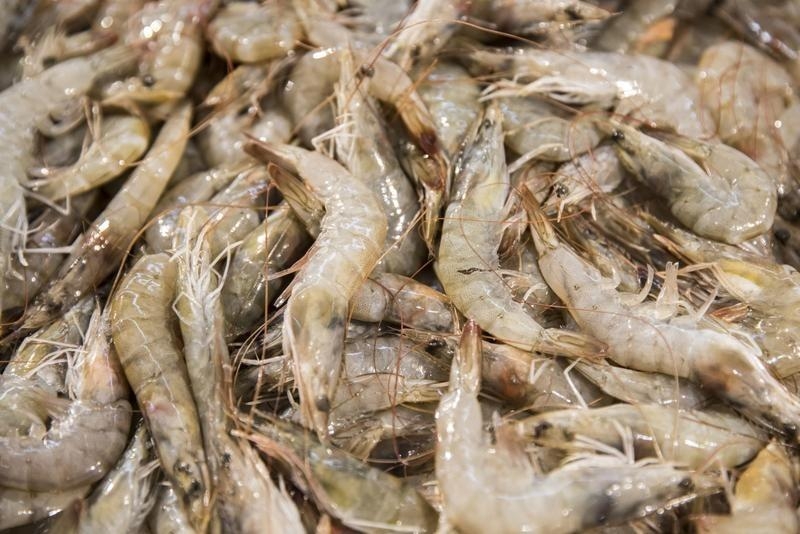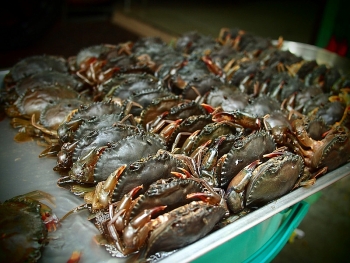China alarmed as coronavirus found on frozen seafood packaging
 |
| An illustration, created at the Centers for Disease Control and Prevention (CDC), depicts the 2019 Novel Coronavirus |
The virus was found on the outer packaging of frozen seafood bought by three companies in Yantai, a port city in eastern Shandong province.
The Yantai city government said in a statement the seafood was from an imported shipment that landed at Dalian but did not say where it originated.
In July, customs officers in Dalian, a major port in the northeastern province of Liaoning, found the coronavirus in the packaging of frozen shrimps imported from Ecuador, and China then suspended imports from three Ecuadorean shrimp producers.
The novel coronavirus is believed to have emerged in a market that sold seafood and wildlife in the central Chinese city of Wuhan late last year.
It has since spread around the world, with some new cases brought back into China from returning travellers.
| As of August 11, China reported 44 new confirmed cases, including 13 local cases (all in Xinjiang) and 31 imported cases (9 cases in Shaanxi, 8 cases in Shanghai, 6 cases in Shandong, and 3 cases in Guangdong, 2 cases in Gansu, 1 case in Hebei, 1 case in Heilongjiang, and 1 case in Zhejiang). |
Some of the seafood that the three Yantai companies bought had been processed for export, while the rest had been kept in cold storage and has not entered the market, the Yantai government said.
When asked if any of the processed seafood had been exported, a member of staff at a coronavirus outbreak response unit in Yantai declined to elaborate, referring Reuters to the Yantai city government statement.
Authorities had sealed off the goods, the city government said. Everyone who handled the goods was under quarantine and have tested negative for the coronavirus, it said.
The latest outbreak of coronavirus in Dalian city started in late July, with the first case working at a seafood processing company. By August 9, Dalian has reported a total of 92 cases.
 |
| In this Aug 7, 2018 file photo, shrimp are displayed for sale inside a Vanguard hypermarket, operated by China Resources Enterprise Ltd., in Shanghai, China, on Aug 7, 2018. Cre: QILAI SHEN / BLOOMBERG |
More specifically, on July 16, the Health Commission of Yunnan province said three of the 2,750 samples related to frozen shrimp shipments from Ecuador tested positive for the virus. Tests on frozen shrimp and people who came in contact with them were negative, according to China Daily.
On July 15, the virus control leading group in Chongqing municipality's Shapingba district said it detected the virus in the outer packaging of Ecuadorian frozen shrimp in a warehouse.
The Chinese General Administration of Customs said on July 10 that six samples recently taken from the interior of containers and outer packaging of frozen shrimp from Ecuador tested positive for the virus on July 3.
The new findings were revealed as local governments nationwide are intensifying screening and testing of frozen products due to detection of the virus by customs officials in Dalian, Liaoning province, and Xiamen, Fujian province, earlier July.
Speculations on the ability of the virus to spread through frozen food flared up in China when the recent outbreak in Beijing was reportedly tied to frozen products sold at a major wholesale market. The source of the outbreak is still under investigation.
There is currently no sufficient evidence to support the transmission of the virus through food, and no confirmed cases worldwide have proved to be infected by eating, experts have said.
However, cold food products, including seafood, and their packaging are likely to be contaminated and become a vector for the virus, and then spread to humans, Li Fengqin, head of the microbiology laboratory at the China National Center for Food Safety Risk Assessment, said in late June.
Wu Zunyou, chief epidemiologist at the Chinese Center for Disease Control and Prevention, said the virus can survive for several months in cool or freezing temperatures.
By latching onto the surface of frozen foods or their packages, the virus can live up to two to three months, he said.
During an interview with China Central Television in July, Wu said the presence of the virus in recent imports from overseas points to the likelihood that the virus can be brought in through seafood products, but more research is needed to determine if such a risk can trigger new outbreaks./.
 | Samsung builds school for disadvantaged children in Lang Son Samsung Electronics Vietnam Co., Ltd, the Korea Food for the Hungry International (KFHI) organization of the Republic of Korea (RoK), the provincial Department of External ... |
 | China increases crab purchase from Vietnam in first four months 2020 Vietnam's crabs export to China in the first 4 months this year tripled amid the Covid-19 pandemic. |
 | 6 tips on grocery shopping during COVID-19 season If your area is currently under a lockdown, it might be hard for you to get the groceries you need. Zach Conrad, assistant professor at ... |
Recommended
 World
World
Pakistan NCRC report explores emerging child rights issues
 World
World
"India has right to defend herself against terror," says German Foreign Minister, endorses Op Sindoor
 World
World
‘We stand with India’: Japan, UAE back New Delhi over its global outreach against terror
 World
World
'Action Was Entirely Justifiable': Former US NSA John Bolton Backs India's Right After Pahalgam Attack
 World
World
US, China Conclude Trade Talks with Positive Outcome
 World
World
Nifty, Sensex jumped more than 2% in opening as India-Pakistan tensions ease
 World
World
Easing of US-China Tariffs: Markets React Positively, Experts Remain Cautious
 World
World




